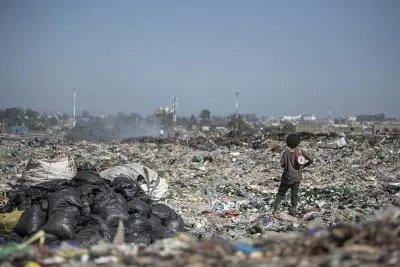Two successive body blows have been dealt to Kenyan manufacturers by the government in the last couple of months. This comes on top of a general downturn in the sector over the last five years.
Spiralling energy costs and an increased tax burden have seen the sector’s contribution to the economy (GDP) decline from 11.21% in 2009 to 10.41% in 2012.
The latest data from the Kenya National Bureau of Statistics (KeNBS) shows that the downturn affects all key sectors including sugar, cement, vehicles and dairy, which experienced a month-on-month decline in production of between 2% and 11%.
Analysts fear Kenya’s hopes of becoming a manufacturing hub by 2030 hang in the balance.
When the VAT Act 2013 came into force on 4th September, it was driven by government’s need to raise KSh10bn ($116.8m) to finance part of the KSh16 trillion ($187bn) budget for 2013/14, and was initially bemoaned for its regressive nature, which places a greater tax burden on poor households.
But it is now becoming clear that manufacturing – the country’s second-largest user of petroleum products after transport, and the largest consumer of electricity – will be hardest hit as the sector reels from an increase in Value Added Tax (VAT) on electricity, fuel oils and industrial diesel.
Tax advisory group KPMG has cautioned that the levy – which increased from 12% to 16% – could eliminate “one of the incentives given to the local manufacturing industry to cushion it against high energy costs”, and have a multiplier effect across the rest of the economy.
Just months after the Act took effect, Betty Maina, CEO of the Kenya Association of Manufacturers (KAM), said, “Local manufacturing companies are beleaguered from all sides and since the introduction of this law, have lost an incredible number of orders. The VAT Act is leading to exportation of jobs from Kenya and it is time for the government of Kenya to urgently review the unintended consequences of a law that was intended to streamline VAT operations, not shut down businesses.”
Consumer quirks
With no choice but to pass the higher production cost onto consumers, Kenyan manufacturers have quickly emerged the losers on local supermarket shelves.
Rising levels of national poverty have seen consumers turn to cheaper imports while workers push for higher wages – which in turn has hiked interest rates and reduced access to credit in the money markets.
The growth of the middle class – with its penchant for eggs from South Africa, toothpicks from China and rice from Pakistan – has also worked to the detriment of local manufacturers, and increased the foothold of foreign companies in Kenyan retail outlets.
Competition between local and foreign brands has also intensified with the emergence of a young shopper population that is experiencing big changes in personal income, aspirations and living standards.
“In this environment, the leading brands cannot afford to relax at all”, reads the latest report on the country’s number-one consumer brands by the Reja Research Group, emphasising the cut-throat competition in Kenya’s manufactured product segment.
First casualties
As foreign producers consolidate their share of the Kenyan wallet, a direct impact is being felt on the macro economy.
“Instead of expanding in Kenya, the jobs in [the manufacturing] sector are currently being exported,” said KAM CEO Maina. “We must not allow mistakes that can be corrected to strangle businesses with promise and a future.
“We have a duty to safeguard existing employment rather than hope we can create some in future or reverse preventable losses,” she added, foreseeing how the increased tax burden would worsen the national unemployment rate of 40%.
Maina also cautioned that the pharmaceutical and machinery sectors would be the first casualties of the policy, and challenged government’s commitment to driving medium-term development through the sector.
Kenya’s sugar sector has also sustained a major hit after production declined by 8.2% in the first quarter of 2013 due to continued cane poaching and stiff competition.
A KeNBS report indicates that production in Q1 2013 declined to 182,000MT compared to 201,000MT in the same period last year.
In November, former permanent secretary for the Ministry of Information and Communication, Bitange Ndemo bemoaned how Brazil, Thailand, Australia and Guatemala could produce by-products like ethanol from excess production while Kenya only produces cane for sugar production. The expiry of COMESA’s importation safeguard measures in 2014 are set to further increase competition in the local sugar market.
Cement manufacturers, who declared strong profits for 2012/13, are also cautious about how their sales in the region will be affected by the entry of large manufacturers such as the Nigerian Dangote cement, which is setting up in Tanzania.
Not leading the pack
According to the Ease of Doing Business survey conducted annually by the IFC and World Bank, Kenya’s business environment is growing more unfriendly. It dropped seven points from 129 in 2013 to 122 in 2014.
The country ranks behind South Africa and Egypt in terms of energy costs, and in the last decade, a number of multinationals such as Mecer, Colgate Palmolive, Unilever, Cadbury, Johnson & Johnson, Procter & Gamble and Reckitt Benckiser have relocated their manufacturing plants.
Lobby groups warn that the latest hike in energy costs – which experienced a 4.3% year-on-year increase in the third quarter of 2013 – will further discourage investors from venturing into Kenya.
“The country has to brace itself for a massive exodus of manufacturing companies to countries that have cheaper energy costs such as Ethiopia, Egypt, Tanzania and Uganda,” said KAM CEO Maina.
Vimal Parmar, Head of Research for sub-Saharan Africa at investment advisory firm Burbidge Capital, adds that operational costs for manufacturers may go even higher in the coming year.
“In 2014, interest rates (driven by inflation levels) will again be a key determinant of growth in the manufacturing sector. Note that Kenya still runs a current account deficit and the need for more resources to run the county governments will increasingly require more funding,” he said.
Vimal Shah, chairman of the Kenya Private Sector Alliance and CEO of Bidco Oil Refineries, a leading producer of edible oils, fats and soaps in East and Central Africa, has also protested Kenya’s reduced competitiveness in the region, and called on government to urgently address issues surrounding labour, power and costs of other inputs.
Infrastructure incentives
Kenya’s business environment is expected to improve in the near future headlined by massive investments in renewable energy; projects such as the Lake Turkana Wind Farm, Menengai geothermal power plant, and the Kenya-Ethiopia power transmission line.
The government has also initiated mega infrastructure projects to streamline regional trade, such as the Mombasa Port and the Northern Corridor.
These plans are developing parallel to the formation of a regional bloc that will ultimately see the East African Community (EAC), the Common Market for Eastern and Southern Africa (Comesa) and Southern African Development Community (SADC) form a free trade area covering over 527m people with an estimated combined GDP of about $624bn.
With a strong middle class propelling the retail sector, and foreign direct investment targeting the fledgling oil/gas sector, Kenya is expected to catapult into middle-income status by 2030.
“We want to make Kenya Africa’s gateway, manufacturing and technology hub and a home to millions of entrepreneurs.
“My administration intends to set off an industrial revolution to power our ambition of becoming a middle-income country by 2030,” said President Uhuru Kenyatta, when he opened a two-day financial conference in September.
Confidence in his government, which is perceived as pro-growth and proactive, is also a key factor driving growth.
As an indication of its confidence in the country, tobacco giant BAT has spent over KSh5 billion ($58.4m) upgrading its Nairobi plant and making it one of the group’s four strategic factories in Africa and Middle East.
Beverage company Coca-Cola recently invested a similar amount to boost capacity of its seven Kenyan franchises and expand its juice market. And in early November, Anglo-Dutch manufacturer Unilever indicated plans to invest €150m (KSh17.4bn, $202m) into a regional manufacturing plant.
Adan Mohamed, Cabinet Secretary for Industrialisation and Enterprise Development, sees in this the success of his Ministry’s attempts to ease protectionist interventions and create an environment that can attract manufacturing giants.
The devolution into county governments has also spurred confidence with hopes that the move towards value addition industries will boost the manufacturing sector.
However KEPSA’s Vimal Shah warns, “The only challenge is if [the counties] become county-centric and start acting like independent countries and impose double taxation. Then there will be disorientation. If free movement of goods does not happen, it will spell trouble for the industries.”
With multinational giants poised to capitalise on these latent opportunities, it is no surprise that local manufacturers are exasperated by government’s latest attempts to curtail their competitive abilities.
Aamera Jiwaji
Want to continue reading? Subscribe today.
You've read all your free articles for this month! Subscribe now to enjoy full access to our content.
Digital Monthly
£8.00 / month
Receive full unlimited access to our articles, opinions, podcasts and more.
Digital Yearly
£70.00 / year
Our best value offer - save £26 and gain access to all of our digital content for an entire year!

 Sign in with Google
Sign in with Google 





